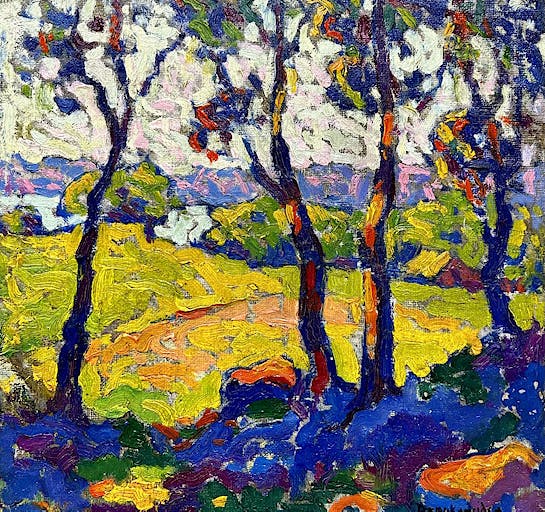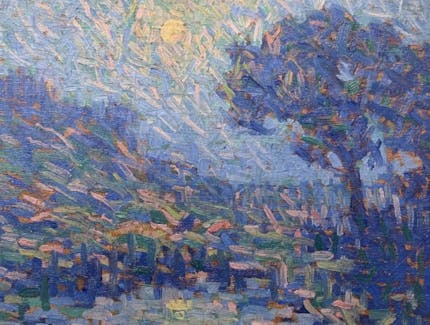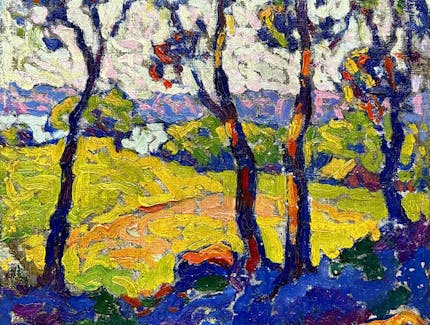Hugh Breckenridge
1870 - 1937

Hugh Breckenridge
1870 - 1937
Born in Leesburg, Virginia, Hugh Henry Breckenridge was long associated with Philadelphia as a modernist painter and teacher. From 1887 to 1892, he was a student at the Pennsylvania Academy of the Fine Arts, where he then taught for more than forty years. In 1892 he was awarded a scholarship enabling him to study in Paris at the Academie Julian with William Adolphe Bouguereau (1825-1905) and to travel through Europe, going with the Pennsylvania impressionist Walter E. Schofield (1869-1944). His subsequent landscapes, portraits, and figure paintings reveal the influence of impressionism and an overwhelming fascination with color. His first solo exhibition in 1904 included both paintings and pastels. Breckenridge also produced many commissioned portraits, which provided him with a source of income; these exhibit the dazzling brushwork typical of society portraiture of the period. A second trip to Europe with Schofield in 1909 made Breckenridge aware of more avant-garde trends. During the 1910s, he worked alternately in a vigorous neo-impressionist technique, which he referred to as "tapestry painting,' and in a somewhat academic style enriched by an expressionist palette. These paintings gained for him national recognition as a foremost modernist whose art was easily accessible to the public. Ultimately, however, Breckenridge remained loyal to more contemplative and traditional subject matter. His later works were often floral still-lifes, or depictions of the Gloucester harbor in Massachusetts, which was only an open door or window away from his waterfront studio. Gloucester was the location of many of Breckenridge's most treasured associations, especially those connected with his art school. 'Gloucester has everything the artist wants except mountains,' he told an interviewer in 1926, and obviously his opinion changed little over the last decade of his life.




